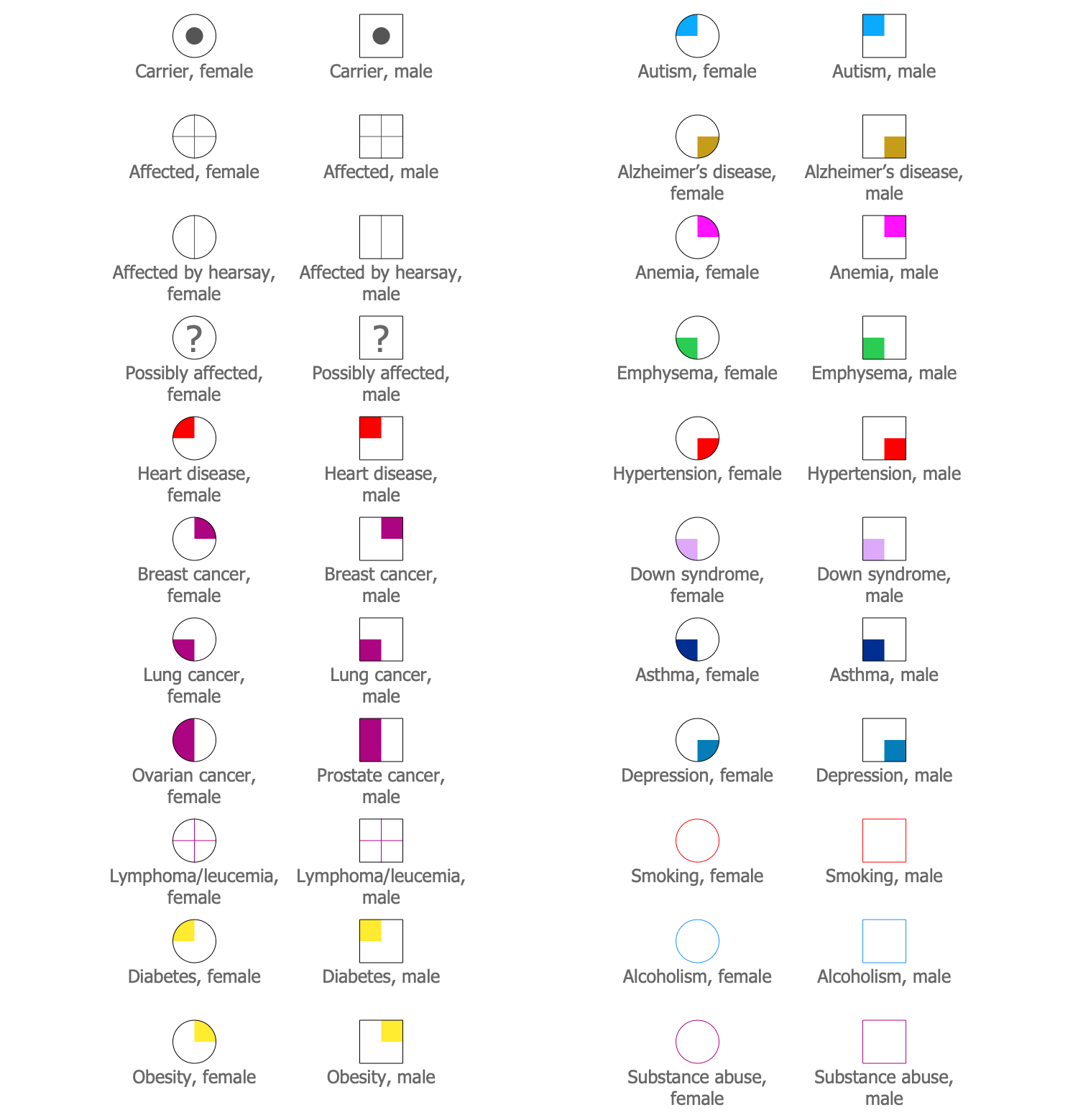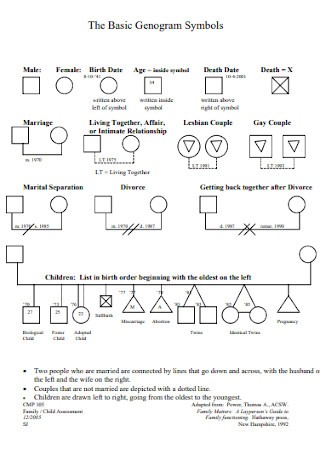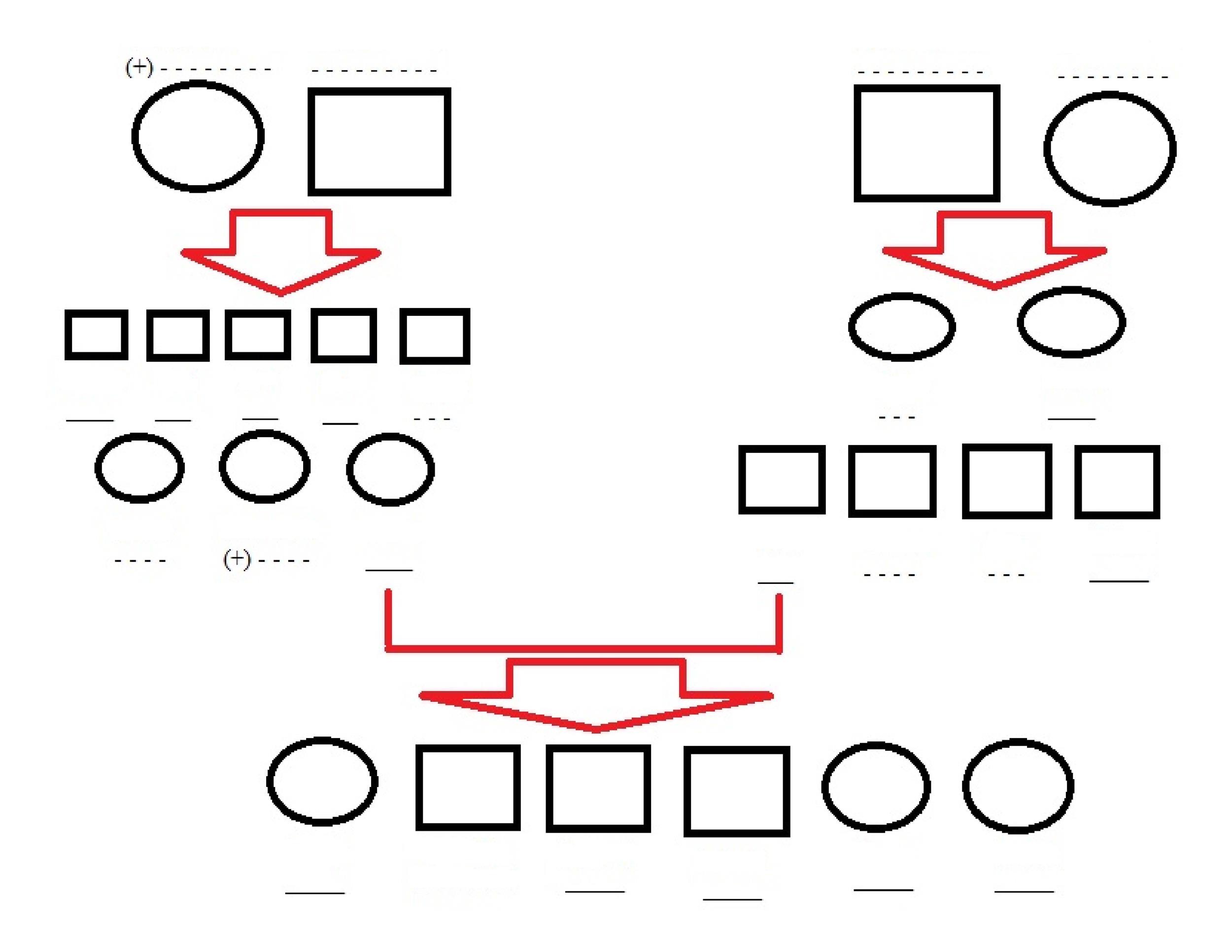

Determine Love and Hate in RelationshipsĪnother very interesting thing about Genograms is that they might even list the type of relationship that individuals have, ranging from friendship to hate. Similarly, the way symbols are represented in a Genogram explains whether children are twins, adopted or are listed with their biological parents. A Genogram uses a square for male and a circle for female family members. What is a Genogram and what hereditary information can it provide? A Special Visualization for Listing RelationshipsĪ Genogram is a very precise family tree, which lists specific information using visual cues to list relationships of individuals in a family. But are Jack and Elizabeth twins, are the listed parents their biological parents or were they adopted? You can answer all these questions in the form of a Genogram. For example, you might see a family tree and realize that Jack and Elizabeth are siblings. Conventional family trees might have names and relationships listed next to images or within shapes, however, these type of family trees can often be deprived of a lot of information. Therefore a second document known as an ecomap can be very useful to support genograms by providing an idea of who the young person sees as important.You might have seen a family tree, depicting generations of lineage and relationships of a family. Is there any relationship / contact with his maternal aunt (Eve)?.Who does he see as his grandparents – Grace and James or Grace and Simeon?.Does he have a relationship with his father?.If we consider Harry in the example above, the following questions are not answered: With what are termed “ blended families” on the increase, genograms do not tell us about the amount of contact that there is between family members, or who is important to the child (i.e. Whilst providing a useful summary of the family relationships, genograms do not tell about the dynamics in the home and wider family. ages / dates of birth / year or date of death / etc.) as this adds more context. Record as much as you can in terms of additional information (e.g.It doesn’t have to just be in black and white, it may be useful to add colours to identify specific family groups within the genogram.This allows you to keep track of change over time. Date when the original genogram was completed and when any subsequent information is added.Ensure that you use a large piece of paper – on many occasions an A3 sheet may be necessary due to the complexities of family dynamics.A quick access guide that you can print for ease of reference can be found at the bottom of the page. You can therefore see that there is a lot of information that can be stored for quick access using a genogram. Initially, it may look confusing, however let’s break it down and look at what the individual parts of the genogram are telling us. Click on the image to see a larger version. Females are represented by circles, males by squares. Each line in the genogram represents a generation, with all the children on the bottom line, the parent’s generation above them and the grandparent’s generation at the top of the diagram. Through working with him you have established who the adults are in his immediate family, going back to his mother’s parents. Harry (represented by the green block) is a pupil at your school.

Norton and Company Inc.)īy creating and using genograms and ecomaps with children you can establish a lot about the context the child or young person is living in, who is important to them and who may have parental responsibility.

A genogram offers the clinician a basic picture of who clients are, where they come from, and who matters in their lives. Simply put, a genogram is a map of who you belong to. McGoldrick (2016) describes a genogram as:
#Genogram symbols how to#
Genograms use a common set of symbols, and in this post we look at how to use these to construct and read a genogram. By creating and using genograms and ecomaps with children you can establish a lot about the context the child or young person is living in, who is important to them and who may have parental responsibility. A genogram is another way of describing a family tree and can be useful for establishing who is living in the home and who is in the wider family network, and whether there is contact or not.


 0 kommentar(er)
0 kommentar(er)
